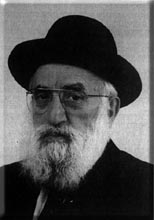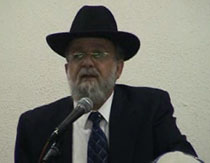Beit Midrash
- Torah Portion and Tanach
- Bamidbar
- Balak
- Sections
- Chemdat Yamim
- Parashat Hashavua
We will suggest another explanation. Micha was of the generation of Yeshayahu but received his prophecies later, starting with the time of King Yotam. There was apparently not that long between them, as Chazal tell us that Yeshayahu’s opening prophecy was on the day that Uziyahu was stricken with leprosy, which was actually the time when Yotam started his rule. The prophecies of Yeshayahu and Micha look very similar, but it is important to note differences.
Yeshayahu describes a national redemption in which Mashiach does not hold a central role. In the famous prophecy about "the end of days" (Yeshayahu 2), he speaks about world peace, with gentiles coming to Yerushalayim for inspiration. He does not mention King Mashiach. If he is hinted at, he is not fighting Hashem’s wars because swords have already been turned into ploughshares. When Yeshayahu mentions Mashiach (ibid. 11:1-5), he is not a warrior but a spiritual man who serves as a judge. Study of Yeshayahu teaches that this image was a result of the fact that Uziyahu, a warrior king who could have been Mashiach, failed and was punished. This prophecy could have been fulfilled in the time of another righteous king, Chizkiyahu, while the first Beit Hamikdash still stood.
Micha spoke about a later time, when the Beit Hamikdash would already not be standing and Mashiach would come. He describes Mashiach as following the model of his forefather, King David, who was a fierce warrior (see Micha 5:1; 5:7-8; 4:13).
When the pre-state settlement movement began, the first group of (religious) settlers of Gush Etzion saw Micha as their "Rav" and inspiration. That is why they wanted to locate the first settlement in Migdal Eder, a place mentioned prominently by Micha (4:8). They understood that pasuk according to Rashi and the Targum, as a reference to Mashiach and the return of Jewish sovereignty. They followed the Rambam (Melachim 11:1) who, in describing the time of Mashiach, cited the p’sukim from Micha rather than from Yeshayahu, along with p’sukim from the prophecies of Bilam from our parasha. He speaks about Bilam referring to two "anointed ones," David and Mashiach.
Therefore, the settlers of Gush Etzion followed those who wanted to connect the prophecies of Bilam and Micha. The Religious Zionist movement has, for over 100 years and especially since the establishment of the State, been following the approach that combines elements of Micha and Yeshayahu, which, after all, come from one holy source. On the one hand, we believe in developing great leaders in spiritual matters, such as Torah and fine attributes, like our mentor Rav Shaul Yisraeli z.t.l. On the other hand, we believe in developing those who, as part of their service of Hashem and nation, serve in the army, as Micha (and the Vilna Gaon) saw as a necessity for our times. Indeed, we have seen that the path of redemption requires steps of national sovereignty taken in the physical world. May we continue to make progress in building the State in all pertinent ways until the process is completed, as the prophets foresaw.























